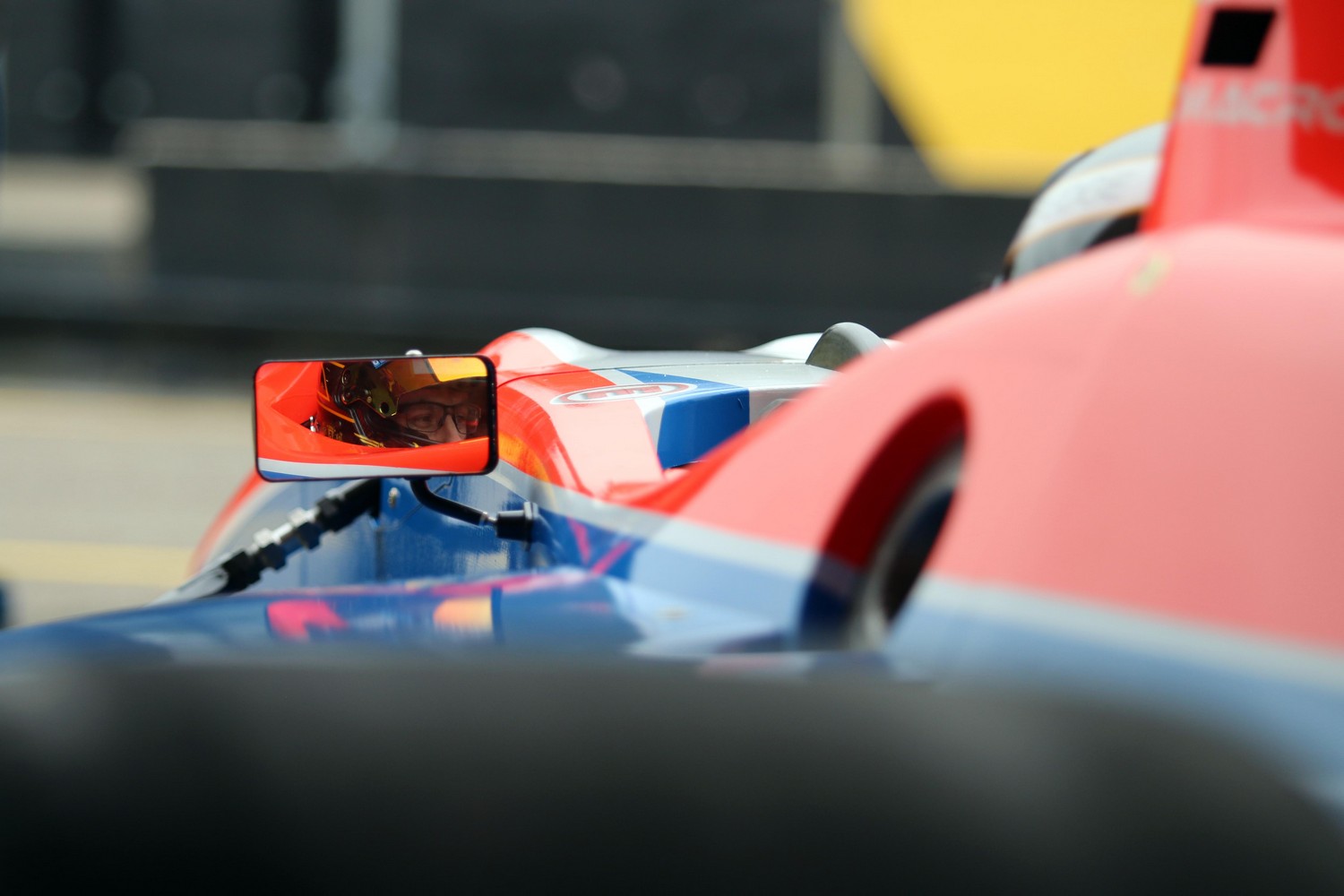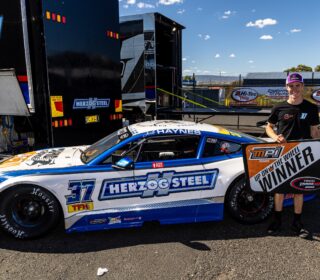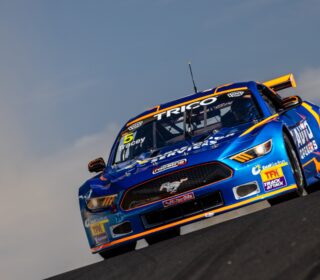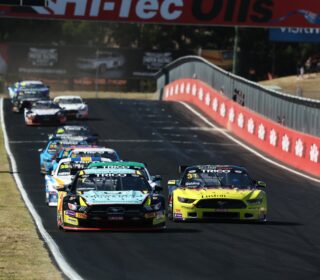THE BIG PICTURE: THE OPEN WHEEL DEBATE

Folks older than I opine that open-wheeler racing reached its zenith in Australia in the mid-late ‘60s.
This was the era of the Tasman Series in its original form, when a select number of Formula 1 drivers and teams came ‘down under’ for our summer (their winter), to contest an eight-race series, rounds of which split evenly between New Zealand and Australia.
Ostensibly the rules required 2.5 litre engines rather than F1’s 3 litre capacity but rumour has persisted over the decades that few, if any, of the visiting Grand Prix teams actually bothered to make the capacity change.
Irrespective, we saw the very best from Europe like Jim Clark, Graham Hill, Jackie Stewart, Jochen Rindt, Chris Amon, Denny Hulme, Piers Courage and our own Jack Brabham, take on the best of the locals.
Spencer Martin, Kevin Bartlett, Leo Geoghegan, Frank Matich and Max Stewart were among the local stars of that era, with Matich particularly demonstrating abilities that could have had him a Grand Prix front runner.
I discovered open-wheelers a little later than this, in the early ‘70s when the Tasman was centred on F5000 cars.
The Grand Prix teams no longer came but every year there was a bunch of visiting F5000 internationals from Europe and America, to take on our home-grown Australasian F5000 stars.
Matich was still there, initially in McLarens but later in cars of his own design that were as fast as they were ungainly.
Bartlett was there, and (Max) Stewart and Amon too, and they were joined by quick Kiwis Graham McRae, Graeme Lawrence and Ken Smith, and closer to home John McCormack, Johnny Walker, Vern Schuppan and Warwick Brown among many others.
That ‘fun in the sun’ feel of the F1 troupe visiting on holidays in the ‘60s had been left behind, replaced by the spectacular ‘70s thunderous roar of a big field of F5000 in full flight.
These were heady days for open-wheeler racing in Australia, looked upon fondly by anyone lucky enough to experience F5000 in the day. It’s why they are the headline attraction at many historic racing events today.
But just as the Tasman formula ran out of steam and was replaced by F5000, so too that also came to an end as the world refocussed on a new open-wheeler category variously called Formula Atlantic (USA), Formula Mondiale (Europe) and, in our neck of the woods, Formula Pacific.
Much more modern in concept that the F5000s, and significantly smaller, Formula Pacific had newly-discovered ground-effect venturis in their sidepods and 2 litre Ford BDA engines in their tails.
Just as Lola had dominated world F5000 production, so Ralt did the same in Formula Pacific. Our fields were 90 percent Ralts of various descriptions, with the odd Tiga (come on down Tim Schenken), Chevron and Toleman thrown in for good measure.
The stars of this era were the ever-green John ‘Lucky Nuts’ Bowe, Alfie Costanzo, Andrew ‘Mad Andy’ Miedecke, the improbably named but ultra-fast John Smith, F1 returnee Larry Perkins, Richard ‘father of Alex & Will’ Davison, Bruce Allison, Charlie O’Brien, Robert Handford and a bunch of others I’ve forgotten.
For two glorious seasons, these guys went to war along the eastern seaboard in a series backed by National Panasonic, slugging it out in the best open-wheeler racing I have ever seen in this country.
It was nuts … everyone was playing for keeps and the racing was intense. There were plenty of off-track blews between drivers, some huge shunts and lots and lots of brilliant racing.
The teams were pretty serious too and, although it is hard to imagine now, really this category was the Supercars of its day, where all the best drivers, teams and engineers were.
Even Wayne Eckersley, having just prepped Alan Jones to the World Driver’s Championship for Williams, returned home to engineer tintop refugee Charlie O’Brien to victories driving the world’s most highly-engineered Ralt.
Of course, Bob Jane gave the whole Formula Pacific scene a huge boost by staging the Australian Grand Prix at his Calder track – before it was Calder Park and on the original 1.6 km short track!
Not only that, Jane also brought out variously for his Grands Prix events then-current Formula 1 drivers Jones, Niki Lauda, Alain Prost, Nelson Piquet, Keke Rosberg, Didier Pironi, Andrea DeCesaris and Jacques Laffite to drive cars, though it was Piquet’s protégé and rising star Roberto Moreno who won in both 1981 and 1982.
In some ways it was like the late ’60s field from the Tasman days, but for just one event.
Can you imagine current Formula 1 stars coming out to the other side of the world for just one race, driving cars they’d never sat in and likely inferior to the locals’ well-sorted machines?
Sadly, it just wouldn’t happen today.
Again, like all good things, it had to come to an end as the money ran out and like the categories before it, Formula Pacific wilted and then slowly died on the vine.
With no viable global alternative in the offing, CAMS chose to create a home-grown premier open-wheeler category called Formula Holden.
I can’t shed much light on Formula Holden as I’d personally lost interest with the death of Formula Pacific, but those involved in that era tell me it was a decent enough series for a couple of years, until the inevitable happened again.
The legacy of Formula Holden, though, was that it had disconnected our premier open-wheeler category from the rest of the world … at least with the Tasman formula, F5000 and Formula Pacific, we had something that allowed a flow of cars, knowledge, technology and drivers to our shores and back again.
So, since the demise of Formula Holden, Australia has not had a premier open-wheeler category.
For better or for worse, and reflective of sports the world over at its most elite level, Supercars has sucked all the money out of the sport at the professional end, aided and abetted more recently by GTs, so the dollars that might once have been invested in open-wheelers have gone elsewhere.
Not that there is anything to invest in, anyway.
So what we are really saying is that if one these categories actually turns into a thing, it’ll be as ‘entertainment’ only. And that’s fine … a full field of either, driven energetically, would certainly be fantastic to watch.
Even CAMS recognised this a few years’ back by setting aside its Gold Star for the Australian Driver’s Champion, awarded for decades to the winner of our premier open-wheeler series, and once the most coveted accolade in Australian motor racing.
Now there’s no premier category open-wheeler champion to give it to, though some would argue that in fact as a recognition of the best driver in Australia, it should be awarded annually to the Supercar Champion.
So, where to for the premier class of open-wheelers in Australia? What should it be? And do we even need a premier open-wheeler class in Australia now?
It’s clear what it can’t be is a localised version of Formula 1, ala the Tasman days, That would be impossibly expensive and technically impractical. Same too for Indycars … too expensive and not relevant beyond the shores of Donald Trump territory.
Right now, there’s much excitement and controversy around two ideas for a potential new premier open-wheeler category … ideas that are superficially similar, Chris Lambden’s Formula Thunder 5000 and Supercar Australia’s Super5000.
Both are based on the same premise … a modern-day version of the much-loved Formula 5000, these days a firm fan favourite at historic racing events around the country.
I am not going to enter the debate currently raging between Formula Thunder 5000 and Super5000, about who thought of the idea first, and the rights and wrongs of the two proposed specifications.
No question, the old F5000 was and is a fantastic category because the cars are just so spectacular and noisy, and the concept of reinventing the class for modern times has some merit … on the surface.
But think about it … who is going to drive these cars?
They’re not relevant or similar to any other open-wheeler category anywhere in the world, so young Australian drivers trying to carve out a professional career with the aim of a future in Europe or America, aren’t going to gravitate there.
F5000 is best remember by fans and drivers who are 50+ but surely those Baby Boomers are more likely to want to – and afford to — race the genuine article in historics, rather than invest in the modern equivalent?
Some speculate that Supercars Australia wants its teams to each run one or two Super5000s, as there’s a technical cross-over with the engines, but it’s been widely reported that the teams have already indicated they aren’t interested.
There just isn’t the budget to do it, and the teams don’t have the resources, and anyway where are all these spare Supercar engines supposed to come from, to power a Field of Super5000?
Between the Supercars field itself, Super2 and the Kumho Series, there really isn’t a need to find a repository for old Supercar engines, is there?
Sure, if Super5000 is given a slot on the Supercars schedule and gets a dose of TV time, you might be able to build up a field. Maybe some of the cashed-up businessmen in GT or Carrera Cup might be interested?
But you’d need at least 12 cars to make it exciting and entertaining, otherwise it’d all be a bit lame.
Super5000, or Formula Thunder 5000, is not going to take those drivers anywhere, career-wise, because the category is not going to be relevant to anything else here or overseas.
So what we are really saying is that if one these categories actually turns into a thing, it’ll be as ‘entertainment’ only. And that’s fine … a full field of either, driven energetically, would certainly be fantastic to watch.
But if we are going to have a premier open-wheeler category in Australia, surely it needs to be something that provides a transition from Formula Ford or Formula Four, something that delivers relevant experience to the drivers so that they can take the next step to compete overseas or up the ladder locally to Supercars.
I would argue that, in fact, Australian motor sport has lost the impetus to have or even need a premier open-wheeler category … we’ve been so many years now without one, and plenty of ambitious young drivers have found other pathways to a professional career.
All of which leaves me a little sad … a full field of fast, noisy, difficult to handle open- wheelers, driven at the edge, racing wheel-to-wheel, is the epitome of what great motor racing is all about.
WORDS: David Segal
IMAGE: Richard Craill







